ESCRT-0 marks an APPL1-independent transit route for EGFR between the cell surface and the EEA1-positive early endosome
- PMID: 25588841
- PMCID: PMC4327388
- DOI: 10.1242/jcs.161786
ESCRT-0 marks an APPL1-independent transit route for EGFR between the cell surface and the EEA1-positive early endosome
Abstract
Endosomal sorting complexes required for transport (ESCRT)-0 sorts ubiquitylated EGFR within the early endosome so that the receptor can be incorporated into intralumenal vesicles. An important question is whether ESCRT-0 acts solely upon EGFR that has already entered the vacuolar early endosome (characterised by the presence of EEA1) or engages EGFR within earlier compartments. Here, we employ a suite of software to determine the localisation of ESCRT-0 at subpixel resolution and to perform particle-based colocalisation analysis with other endocytic markers. We demonstrate that although some of the ESCRT-0 subunit Hrs (also known as HGS) colocalises with the vacuolar early endosome marker EEA1, most localises to a population of peripheral EEA1-negative endosomes that act as intermediates in transporting EGFR from the cell surface to more central early endosomes. The peripheral Hrs-labelled endosomes are distinct from APPL1-containing endosomes, but co-label with the novel endocytic adaptor SNX15. In contrast to ESCRT-0, ESCRT-I is recruited to EGF-containing endosomes at later times as they move to more a central position, whereas ESCRT-III is also recruited more gradually. RNA silencing experiments show that both ESCRT-0 and ESCRT-I are important for the transit of EGF to EEA1 endosomes.
Keywords: EEA1; EGFR; ESCRT-I; Hrs; Particle-based colocalisation.
© 2015. Published by The Company of Biologists Ltd.
Figures
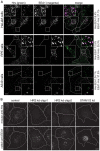
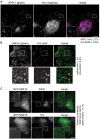


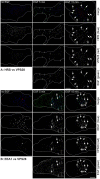

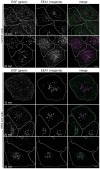
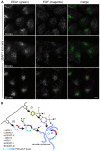
References
Publication types
MeSH terms
Substances
Grants and funding
LinkOut - more resources
Full Text Sources
Other Literature Sources
Research Materials
Miscellaneous

